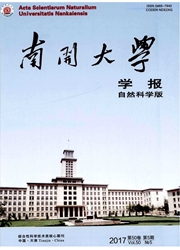

 中文摘要:
中文摘要:
测定了6种萘醌类化合物对正常人肝细胞HL-7702乳酸脱氢酶(Lactate Dehydrogenase,LDH)释放率以及线粒体膜电位的影响.研究发现,LDH释放率随着染毒浓度的增大而增大,而线粒体膜电位却减小,呈现剂量-效应关系.其中,2-羟基-1,4-萘醌引起的LDH释放率变化高于其它4种化合物,而阿托伐醌引起的线粒体膜电位下降最严重,这可能是由于阿托伐醌是高脂溶性的化合物,更容易到达细胞靶点从而引起了严重的细胞凋亡所致.脂水分配系数lgP、分子直径D以及分子拓扑学指数TIndex可能是影响该类化合物对HL-7702致毒作用的主要因素.该类化合物还可能通过疏水作用或者π-π相互作用影响生物大分子,从而产生毒性作用.
 英文摘要:
英文摘要:
The effects of six naphthoquinone compounds, including atovaquone, buparvaquone, 2-hydroxy-1,4-naphthoquinone, menadione, 2-acetoxy-1,4-naphthoquinone and 2-ethoxy-1,4-naph- thoquinone, on LDH Release Rate and Mitochondrial Membrane Potential of HL-7702 Cells were stud- ied. The results showed that the LDH release rates increased while mitochondrial membrane potential reduced with the increase of concentrations. 2-Hydroxy-1,4-naphthoquinone has caused the highest LDH release rate while atovaquone lead to the seriously decline of mitochondrlal membrane potential. It maybe due to the highly lipid solubility of atovaquone which can cause serious apoptosis, lgP, Diam- eter and topological index played an important role in the toxicity of naphthoquinones to HL-7702 cells. At the same time, hydrophobic interaction and π-π interaction may exist between naphthoquinones and biomacromolecules.
 同期刊论文项目
同期刊论文项目
 同项目期刊论文
同项目期刊论文
 期刊信息
期刊信息
